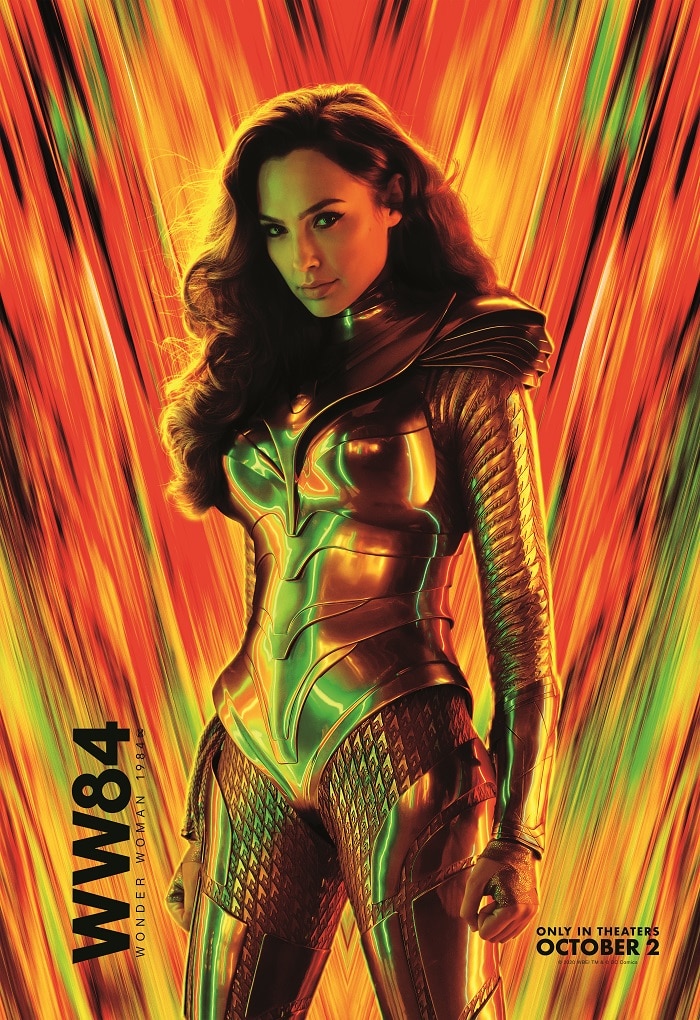DC comics readers know that one of the seminal superhero works of all time is Mark Waid and Alex Ross’s Kingdom Come, four issues that not only broke artistic ground in the comics genre, but undoubtedly inspired countless cosplayers around the world (and still does). But, as any devoted designer will tell you, it’s not as easy as they make it look!
Well, spoiler alert: it’s not easy for the pros, either! We got some insider information from Wonder Woman 1984 costume designer Lindy Hemming and her colleague, HOD (that’s industry speak for Head of Department, folks) costume modeler Pierre Bohanna, and created a quick rundown outlining just some of the unique details involved in creating the majestic Golden Armor you’ll see Diana don in the upcoming movie Wonder Woman 1984. You know, in case you were wondering how to make your own…

- Director Patty Jenkins tasked Hemming with making the armor’s wings a tool for both offense and defense in battle—essentially both a weapon and a shield—so Hemming reverse-engineered her design, starting with the latter, then working backwards to devise the folded and fully open options.
- It takes a village: Hemming’s collaborators on this one costume—the armor itself and the wings—included illustrator Geo Pavlov; costume supervisor Daniel Grace; Bohanna and his costume FX team, in particular Andrew Hodgson, Conor Breen and Sam Williams utilizing a variety of 3D modelling programs; and the film’s VFX, SFX and stunt departments.
- Save your pennies, cosplayers! The ability to incorporate a 3D body scan of star Gal Gadot ensured the team’s illustrations were based on a realistic image. According to Bohanna, this step makes the development phase much more precise, allowing for combinations of various components to be tested for movement and fit before his team had to commit to the manufacturing process.

Photo by Clay Enos/ ™ & © DC Comics
- The different sets of wings were composed of anywhere from 140 to 180 feathers or—more accurately—blades, with the fully extended set having the highest number of individual pieces. Incredibly light (a third of the weight was from the gold paint), each blade was made from 0.4 mm thick carbon fiber, with 80 different versions varying in length and scale from one to seven feet.
- The suit of armor itself was made from 110 cast components. When combined with the larger wings, this constituted 280 total components, plus additional fabric work and engineered elements.
- Oh, and remember the gold paint? That might be simplifying it a bit so don’t run down to your local home store. The Golden Armor in Wonder Woman 1984 is actually the first suit to introduce a new version of chroming effect paint that allowed (again, for the first time) a high finish robust enough to be used on flexible, urethane components. The full process involves baking the carbon molds for eight hours at 80˚ C (176˚ F), so at least your home oven should be good to go! (Note: The Daily Star is not recommending you try this at home!)
On August 22nd, head to the FunVerse in the DC FanDome for a close up look at this visually stunning, technologically groundbreaking costume, and check out the InsiderVerse to hear directly from Hemming herself! Of course, if you’re a seasoned cosplayer yourself, the YOUVerse is the place to be to see and admire your fellow cosplayers and fanartists!





















